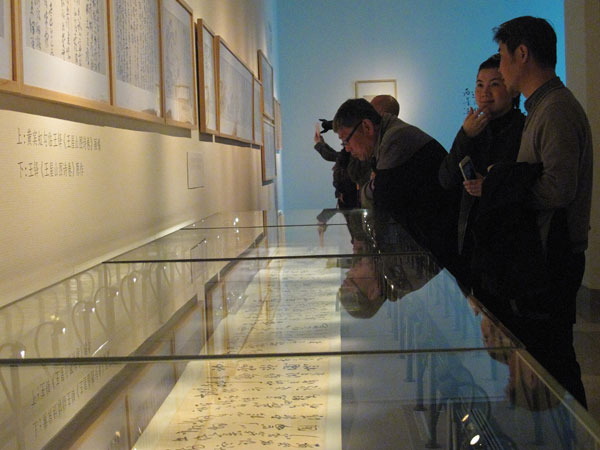Nature's visionary artist
Updated: 2015-04-21 08:06
By Lin Qi(China Daily)
|
|||||||||||
 |
|
Visitors at Huang's retrospective show at the National Art Museum of China.[Photo by Jiang Dong/China Daily] |
"To better understand Huang, one should not forget his vicissitudes. Huang was at first an intellectual, an art theorist, then a painter," Xue says.
Common wisdom has it that it was Huang's passionate engagement with social affairs that prompted his gradual reforms in art. Huang, sensing the end of the feudal dynasties, gave up the keju imperial examinations. He admired and met Tan Sitong (1865-1898), the thinker who played a significant role in the Hundred Days' Reform in 1898; he was deeply influenced by Tan's reformist passion.
Huang advocated for building railways in his native Anhui province, and he supported local revolutionary activities. After moving to Shanghai, he edited and co-funded art magazines, a popular gesture to embrace reforms at the time. His intellectual vision nourished his artistic works.
"Huang didn't feel contented painting the scenery before his eyes. He sought to present under his strokes the 'great beauty of heaven and earth', the soul of people and how his spirit interacted with nature," Xue says.
Another retrospective show of Huang's art is underway at the Zhejiang Provincial Museum, Hangzhou, and will run through May 18.
If you go
9 am-5 pm, through May 10.
National Art Museum of China, 1 Wusi Dajie, Dongcheng district, Beijing. 010-6400-1476.
Related Stories
Liu Yijun's journey from guitar strings to painting show 2015-04-20 15:38
Van Gogh's painting to be auctioned in New York 2015-04-16 10:28
Painting for masses 2015-04-14 08:17
Cross-dressing artist awaits big onstage moment 2015-04-17 07:26
French street artist brightens up Shanghai village 2015-04-14 12:30
Today's Top News
Russia willing to restore relations with Kiev: Putin
Asian markets jumpstart UK car industry
Smog magnifies staffing woes for EU firms
Silk Road initiatives to connect people's hearts
AIIB to operate in 'transparent way'
PLA to buy advanced missiles from Russia
EU accuses Google of hurting consumers, competitors
Q1 economic data: what the economists say
Hot Topics
Lunar probe , China growth forecasts, Emission rules get tougher, China seen through 'colored lens', International board,
Editor's Picks

|

|

|

|

|

|






